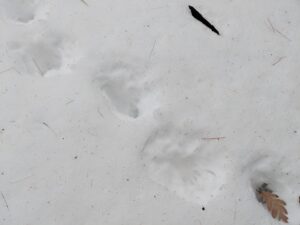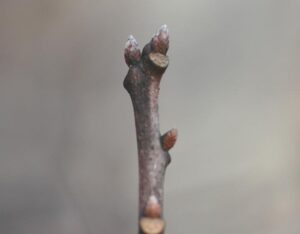This phenology spot has seen a lot of change since my last visit! The snow has piled up, although the rain and high temperature conditions over these last few days must have reduced the snow coverage significantly, to a point where in some areas I can see patches of green grass poking out from the understory of white. With snow comes tracks! But here, unfortunately, is not a place of uncontacted nature. In fact, I believe that most of the wildlife activity is drawn further away into Red Rocks national park because of all the human activity this close to the Burlington Bike path. While there were many birds to witness in the fall season, there are not as many land mammals to leave tracks in the snow, and even the birds have migrated south for a warmer season. I don’t blame them, ourselves keeping close to 0 degrees on the average day here in Febuary.

These are “tracks” I found in my phenology spot. From what I can make out, it looks like a human footprint followed by an accompanying dog, which I can makes out from the larger, round boot-shaped footprint, followed by a five pointed claw which sits in the middle.
The Deciduous tree species I was able to identify were: Red Oak, White Oak, Sugar Maple, Striped Maple, Basswood, and Black Cherry. The most prevalent of these were the Red Oak and Sugar Maple species, making me believe that at least some of this forest has avoided clearing for a good amount of time, and been able to pass its pioneer stage of birches and pines into a deciduous hardwood forest full of trees like the ones I listed above.

 ,
,
Here is a photo of one of the twigs from the red oak (left), along with a drawing of a different red oak twig. In my drawing, I give the twig a terminal and lateral bud, meaning that the twig ends with the terminal bud. In the photo though, there is no terminal bud, as instead the twig seperates at the end into multiple buds. Red oak can take on either of these features in its twigs.


Recent Comments